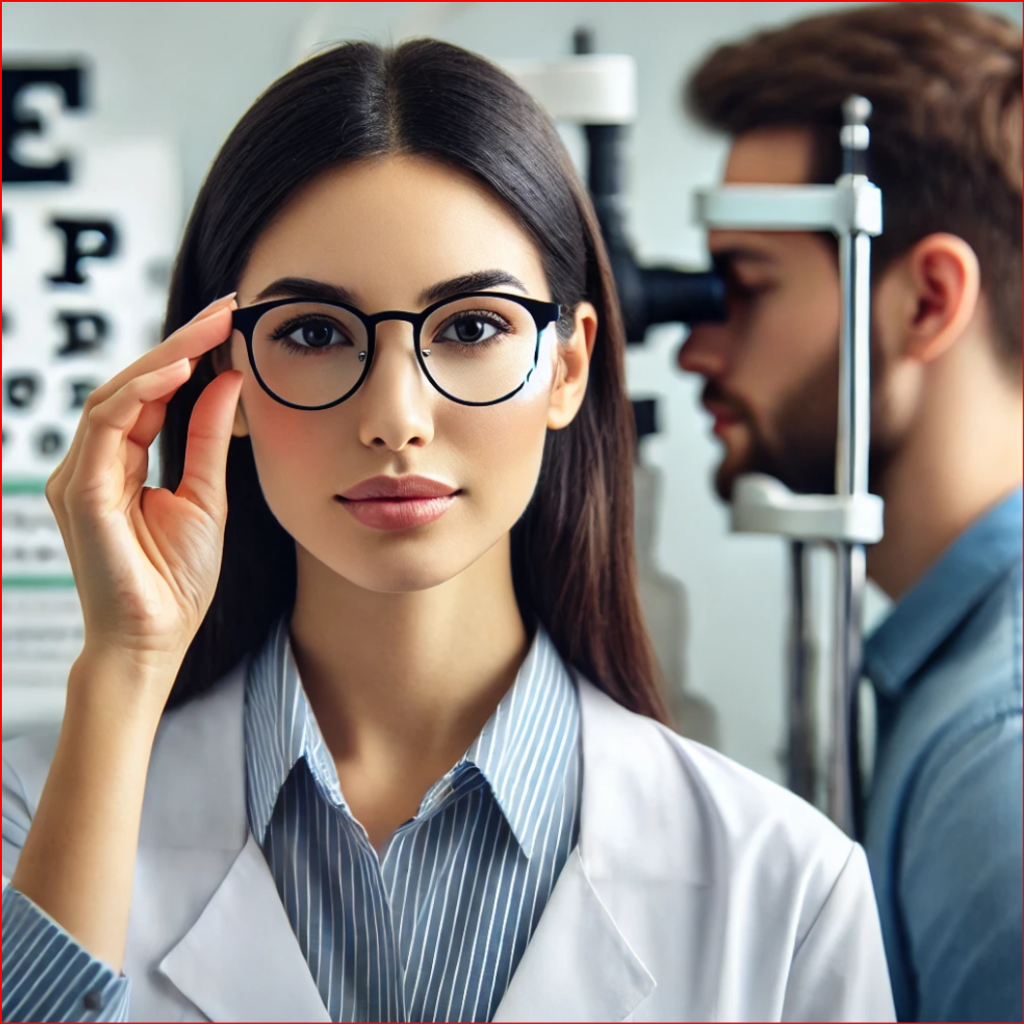What Is High Myopia?
High myopia is a condition where your glasses or contact lens prescription is significantly high. It indicates that the eyeball has grown longer than normal, causing light to focus in front of the retina instead of directly on it—resulting in blurry distance vision.
This condition often develops in children who spend long hours reading or using digital devices, though it can also be genetic. More than just needing stronger lenses, high myopia can seriously impact long-term eye health and increase the risk of serious complications.
The Lifestyle Effect: How Modern Habits Impact Eye Health
In today’s digital world, screen time is at an all-time high. Prolonged use of computers, smartphones, tablets—even TVs viewed at close range—places enormous strain on the eyes.
Long exposure to blue light can also contribute to eye fatigue, dry eye syndrome, and general discomfort. While research is ongoing in this area, the connection between lifestyle and eye stress is clear.
Healthy habits such as taking regular breaks from screens, blinking intentionally, ensuring proper lighting while reading or working, and eating foods rich in antioxidants like vitamin A and lutein can all support better visual health. Combined with customized optical solutions and professional follow-up, these steps can help manage the daily demands placed on our eyes.
Potential Complications of High Myopia
Glaucoma
People with high myopia are at increased risk of developing glaucoma—a condition caused by elevated intraocular pressure that can damage the optic nerve. Without timely treatment, glaucoma can lead to permanent vision loss.
Retinal Detachment
A highly myopic eye is often stretched and elongated, making the retina thinner and more fragile. This increases the risk of retinal detachment, a medical emergency that can lead to vision loss if not treated immediately.
Cataracts
Research shows that high myopia raises the chances of developing cataracts earlier in life. Cataracts cause the eye’s natural lens to become cloudy, reducing visual clarity over time.
Innovative Treatments to Slow Progression
To protect your eyes from these risks, several advanced solutions are available:
Ortho-K Lenses (Orthokeratology)
These custom night lenses gently reshape the cornea while you sleep, allowing for clear vision during the day—without glasses. They also help slow the elongation of the eye by creating controlled peripheral defocus on the retina, a proven method for slowing myopia progression.
Daily Soft Contact Lenses for Myopia Control
Worn during the day, these soft lenses include special zones that intentionally blur peripheral vision while keeping central vision clear. This optical strategy has been shown to slow the progression of myopia in children.
Specialized Myopia Management Glasses
Some glasses today work similarly to myopia-control contact lenses by gently blurring the peripheral image while maintaining sharp central focus. While effective, some children find it harder to adapt to the blur in their side vision compared to contacts.
Regular Monitoring Is Key
Routine visits with an eye care specialist are essential for anyone at risk of high myopia complications. Regular check-ups can detect early signs of glaucoma or retinal changes and ensure that any progression is addressed in time.
Professionals trained in myopia management can also measure axial eye length to track changes over time—a critical tool in protecting your child’s long-term vision.
Prevention Through Innovation
In recent years, technologies aimed at slowing myopia progression—especially in children and teens—have shown significant promise. From specialty contact lenses and Ortho-K night lenses to advanced glasses, these tools help reduce the eye’s elongation and preserve long-term visual health.
Final Thoughts
High myopia is more than a high prescription—it’s a condition with the potential for serious long-term consequences like glaucoma, cataracts, and retinal detachment.
Fortunately, with the right combination of preventive strategies and advanced vision solutions, you can protect your eyesight and live free from fear of vision loss.
For more on costs and what to expect during a fitting, explore our article on scleral lens cost.
If you’re facing symptoms like ptosis or dry eye, you may also benefit from dry eyes treatment or exploring options like keratoconus specialist.

